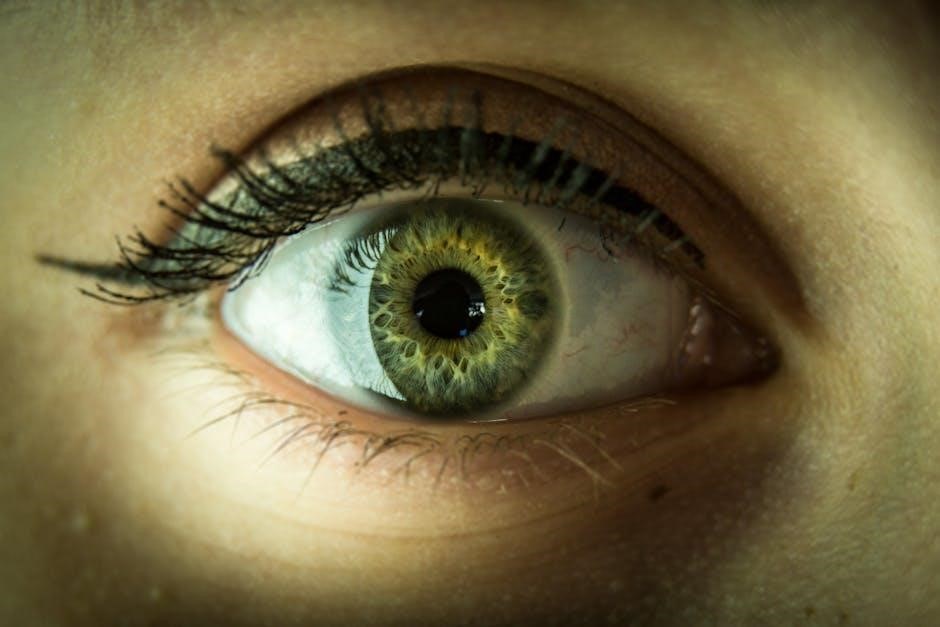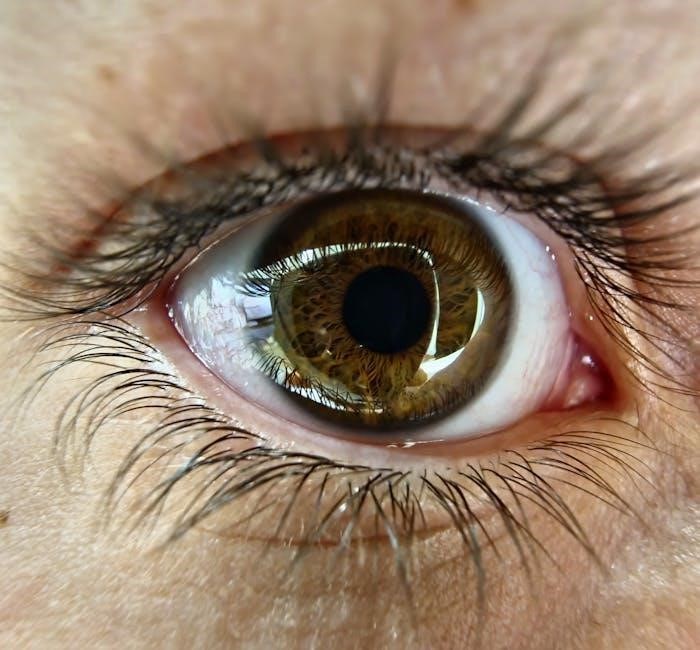Dilation and Curettage (D&C) is a common gynecological procedure involving the dilation of the cervix and removal of uterine tissue. It is primarily used for diagnostic and therapeutic purposes‚ aiding in the investigation of abnormal bleeding and the removal of abnormal tissue. This procedure is essential in women’s health care‚ providing both diagnostic clarity and treatment options.
1.1 Definition of Dilation and Curettage (D&C)
Dilation and Curettage (D&C) is a surgical procedure involving the dilation of the cervix to remove tissue from the uterus. It is commonly performed for diagnostic or therapeutic purposes. The procedure involves two main steps: dilation‚ where the cervix is widened‚ and curettage‚ where the uterine lining is scraped using a curette. D&C is used to diagnose abnormal uterine bleeding‚ investigate pre-cancerous or cancerous changes‚ or remove tissue after a miscarriage or abortion. It is a valuable tool in gynecological care‚ providing both diagnostic clarity and treatment options for various uterine conditions.
1.2 Overview of the Procedure
The Dilation and Curettage (D&C) procedure is a minor surgical intervention that involves two main steps: cervical dilation and uterine curettage. It is typically performed in a sterile environment under general or regional anesthesia to ensure patient comfort. The cervix is gradually dilated using specialized instruments‚ allowing access to the uterine cavity. Subsequently‚ a curette is used to gently remove the endometrial lining or abnormal tissue. The procedure is both diagnostic and therapeutic‚ aiding in the evaluation of abnormal bleeding and the removal of problematic tissue‚ making it a cornerstone in gynecological care.
1.3 Importance of D&C in Gynecological Care
Dilation and Curettage (D&C) holds significant importance in gynecological care as a versatile procedure addressing both diagnostic and therapeutic needs. It is instrumental in investigating abnormal uterine bleeding‚ diagnosing conditions like hyperplasia or cancer‚ and removing abnormal tissue. Therapeutically‚ it aids in managing heavy menstrual bleeding‚ treating post-miscarriage complications‚ and preparing the uterus for fertility treatments. Its ability to provide tissue samples for histopathological examination makes it a critical tool in early detection of gynecological cancers. Additionally‚ D&C is a relatively quick procedure with minimal recovery time‚ enhancing its value in modern gynecological practice.

The Dilation and Curettage Procedure
The Dilation and Curettage (D&C) procedure involves cervical dilation and uterine lining removal. Performed under anesthesia‚ it ensures minimal discomfort. Conducted in a sterile environment to minimize infection risks‚ D&C is both diagnostic and therapeutic. It aids in identifying uterine abnormalities and treats conditions like heavy bleeding. Commonly used to address menstrual issues and post-miscarriage complications‚ D&C is a vital procedure in gynecological care‚ providing tissue samples for analysis and effectively resolving various reproductive health concerns.
2.1 Step 1: Dilation of the Cervix
The first step in a D&C procedure involves the dilation of the cervix. This is done to widen the cervical opening‚ allowing access to the uterine cavity. The cervix is gently dilated using specialized instruments‚ such as dilators‚ to ensure minimal discomfort. The dilation process is crucial for safely inserting the curette in the next step. Anesthesia is typically administered to reduce pain during this step. The procedure is performed in a sterile environment to minimize infection risks. Dilation is a quick process‚ usually completed within minutes‚ and is essential for the success of the entire procedure.
2.2 Step 2: Curettage of the Uterine Lining
Following dilation‚ curettage involves the removal of the uterine lining using a curette. This instrument gently scrapes the endometrial tissue from the uterine walls. The collected tissue is sent for histopathological examination to check for abnormal cells or conditions. Curettage is performed carefully to avoid uterine perforation. The procedure is typically quick‚ with the entire process lasting about 10-15 minutes. It ensures that the uterine lining is thoroughly examined‚ aiding in both diagnosis and treatment of gynecological conditions. The tissue removal step is critical for achieving the procedure’s diagnostic and therapeutic goals.
2.3 Use of Anesthesia During the Procedure
Anesthesia is commonly used during a D&C to minimize pain and discomfort. General anesthesia induces unconsciousness‚ while regional anesthesia numbs the lower part of the body. Some procedures may use conscious sedation to relax the patient. The choice of anesthesia depends on the patient’s health‚ the complexity of the procedure‚ and the physician’s preference. Administering anesthesia ensures the patient remains comfortable throughout the process‚ allowing the healthcare provider to perform the procedure effectively and safely. Proper anesthesia is crucial for a smooth and stress-free experience for the patient.

Reasons for Performing D&C
D&C is performed to diagnose abnormal bleeding‚ remove tissue after miscarriage or abortion‚ and examine for pre-cancerous changes. It aids in both diagnosis and treatment.

3.1 Diagnostic Purposes
Dilation and Curettage (D&C) serves as a vital diagnostic tool in evaluating abnormal uterine bleeding‚ allowing for the collection of endometrial tissue samples. These samples are examined to identify potential abnormalities‚ such as precancerous or cancerous changes. By removing and analyzing the uterine lining‚ healthcare providers can determine the cause of symptoms like unexplained bleeding‚ ensuring timely and accurate diagnosis. This procedure is particularly useful when other diagnostic methods‚ such as endometrial biopsy‚ are inconclusive or insufficient. The collected tissue provides critical insights into uterine health‚ aiding in the early detection and management of gynecological conditions.

3.2 Therapeutic Purposes
Dilation and Curettage (D&C) is often performed for therapeutic reasons‚ such as treating excessive or abnormal uterine bleeding. It is commonly used to remove tissue remaining after a miscarriage‚ abortion‚ or incomplete childbirth‚ preventing infection or prolonged bleeding. Additionally‚ D&C can help manage conditions like adenomyosis or uterine polyps‚ which cause heavy menstrual flow. By removing the affected uterine lining‚ the procedure can reduce symptoms and improve quality of life. It is also used to clear the uterus of abnormal growths‚ ensuring a healthier uterine environment.
3.3 Investigation of Abnormal Uterine Bleeding
Dilation and Curettage (D&C) is a critical diagnostic tool for investigating abnormal uterine bleeding. The procedure allows for the removal and examination of uterine tissue‚ helping to identify underlying conditions such as endometrial hyperplasia‚ polyps‚ or cancerous changes. By collecting tissue samples‚ healthcare providers can determine the cause of bleeding‚ whether it’s hormonal‚ structural‚ or malignant. This diagnostic clarity is essential for guiding appropriate treatment and ensuring patient care is both effective and personalized. The procedure is often recommended when bleeding is unexplained‚ persistent‚ or disproportionately heavy.

Risks and Complications
Dilation and Curettage carries risks like infection‚ bleeding‚ uterine perforation‚ and Asherman’s Syndrome. These complications‚ while rare‚ require careful monitoring and prompt medical intervention.
4.1 Infection
Infection is a potential risk following a D&C procedure. Bacterial contamination can occur‚ leading to conditions like endometritis or pelvic inflammatory disease. To minimize this risk‚ antibiotics are often administered before the procedure. Symptoms of infection may include fever‚ abnormal discharge‚ or prolonged pelvic pain. If left untreated‚ infections can lead to more severe complications‚ such as prolonged recovery or the need for additional treatment. Proper sterilization and post-procedure care are essential to reduce the likelihood of infection and ensure a safe outcome for patients undergoing D&C.
4.2 Bleeding
Bleeding is a common complication of D&C‚ ranging from mild spotting to heavy bleeding. Most cases are self-limiting‚ but excessive bleeding may require medical intervention. Factors such as the procedure’s complexity or pre-existing conditions can increase the risk. Patients may experience light bleeding for a few days post-procedure‚ but heavy or prolonged bleeding should be reported. Monitoring and proper post-procedure care are essential to minimize bleeding risks and ensure a smooth recovery. In rare cases‚ surgical intervention or blood transfusions may be necessary to address severe bleeding complications.
4.3 Uterine Perforation
Uterine perforation is a rare but serious complication of D&C‚ occurring when the uterine wall is inadvertently punctured during the procedure. This can happen due to excessive force during dilation‚ cervical stenosis‚ or pre-existing uterine abnormalities. Symptoms may include severe pelvic pain‚ heavy bleeding‚ or signs of internal injury. Immediate surgical intervention is often required to repair the perforation and prevent further complications. While the risk is low‚ uterine perforation underscores the importance of careful technique and patient selection to minimize adverse outcomes during the procedure.
4.4 Asherman’s Syndrome
Asherman’s Syndrome is a rare but significant complication of D&C‚ characterized by the formation of intrauterine adhesions or scar tissue. These adhesions can lead to a reduction in the volume of the uterine cavity‚ potentially causing menstrual irregularities‚ infertility‚ or recurrent miscarriages. The risk is higher in cases where multiple or aggressive curettage is performed. Early diagnosis through imaging or hysteroscopy is crucial‚ with treatment often involving surgical adhesiolysis to restore the uterine cavity. Preventive measures include minimizing traumatic techniques during the procedure and using estrogen therapy post-surgery to promote healing.

Recovery and Aftercare
After a D&C‚ patients may experience mild cramping‚ spotting‚ or fatigue. Recovery typically takes a few days‚ with most women resuming normal activities within a week. Rest‚ avoiding heavy lifting‚ and following hygiene practices are recommended to prevent complications.
5.1 Immediate Post-Procedure Care
After a D&C‚ patients are monitored for bleeding and discomfort. They may experience mild cramping‚ spotting‚ or fatigue. It is essential to rest‚ avoid heavy lifting‚ and refrain from sexual intercourse for 1-2 weeks. Sanitary pads should be used instead of tampons to reduce infection risk. Patients are advised to watch for signs of infection‚ such as fever‚ heavy bleeding‚ or foul-smelling discharge. Clear instructions are provided for pain management and hygiene practices. Follow-up appointments are typically scheduled to ensure proper healing and address any concerns.
5.2 Follow-Up Appointments
Follow-up appointments are crucial after a D&C to monitor healing and address concerns. Typically scheduled 1-2 weeks post-procedure‚ these visits allow healthcare providers to check for complications and ensure proper recovery. During the appointment‚ the provider may evaluate bleeding patterns‚ assess cervical healing‚ and discuss test results from the tissue removed. Patients are encouraged to ask questions and report any unusual symptoms. Follow-ups also provide an opportunity to receive personalized advice on resuming daily activities and future reproductive health. Regular check-ups ensure a smooth recovery process.
5.3 Resumption of Normal Activities
Most women can resume normal activities within 1-2 days after a D&C‚ though strenuous tasks should be avoided for 1-2 weeks. It’s important to avoid tampons‚ douching‚ or sexual intercourse during this period to prevent infection. Patients are advised to follow specific post-procedure guidelines provided by their healthcare provider‚ as these may vary. Resuming activities too quickly can increase the risk of complications. Listen to your body and gradually return to routine tasks‚ ensuring proper healing and minimizing discomfort. Always prioritize rest and hygiene during the recovery phase.

Related Surgical Procedures
Several surgical procedures are related to D&C‚ including hysteroscopy‚ hysteroscopic polypectomy‚ and fractional curettage. These procedures often serve as alternatives or complementary methods to D&C‚ addressing similar gynecological conditions.
6.1 Hysteroscopy
Hysteroscopy is a surgical procedure that visually examines the inside of the uterus using a thin‚ lighted telescope called a hysteroscope. It is often performed alongside D&C to diagnose and treat abnormalities such as polyps‚ fibroids‚ or intrauterine adhesions. During the procedure‚ the hysteroscope is inserted through the cervix‚ allowing the doctor to view the uterine cavity on a monitor. This minimally invasive technique provides detailed insights‚ enabling precise tissue sampling or removal without the need for more invasive surgery. It is commonly used for both diagnostic and therapeutic purposes.
6.2 Hysteroscopic Polypectomy
Hysteroscopic polypectomy is a minimally invasive procedure to remove uterine polyps using a hysteroscope. A thin‚ lighted telescope is inserted through the cervix to visualize the uterine cavity. The polyps‚ which are non-cancerous growths‚ are then removed using specialized instruments. This procedure is often performed concurrently with a D&C for diagnostic and therapeutic purposes. It allows for precise removal of polyps while preserving the uterine lining‚ reducing the risk of complications. Hysteroscopic polypectomy is highly effective in treating abnormal bleeding and fertility issues caused by uterine polyps.
6.3 Fractional Curettage
Fractional curettage is an advanced technique often combined with D&C‚ allowing for the separate collection of tissue samples from different uterine regions. This method ensures precise diagnostic evaluation by distinguishing between endocervical and endometrial tissues. It is particularly useful in identifying pre-cancerous or cancerous changes‚ providing a comprehensive view of uterine health. Fractional curettage enhances the accuracy of histopathological examinations‚ making it a valuable procedure in modern gynecological practice for both diagnostic and therapeutic purposes.

Preparation for D&C
Preparation for D&C involves medical evaluation‚ adherence to pre-procedure instructions‚ and possibly the use of antibiotics to minimize infection risks and ensure a safe procedure.
7.1 Medical Evaluation
A medical evaluation is a critical step before a D&C procedure to ensure patient safety. It involves reviewing the patient’s medical history‚ current health status‚ and any underlying conditions. This assessment helps identify potential risks and ensures the procedure is appropriate. The healthcare provider may order diagnostic tests‚ such as blood work or imaging‚ to evaluate overall health. Additionally‚ discussions about medications‚ allergies‚ and previous surgeries are essential to customize the procedure and minimize complications. This thorough evaluation ensures the D&C is performed safely and effectively for the patient.
7.2 Pre-Procedure Instructions
Pre-procedure instructions for a D&C are designed to ensure patient safety and optimal outcomes. Patients are typically advised to avoid eating or drinking for a specified period before the procedure. They may be instructed to stop taking certain medications‚ such as blood thinners‚ and to inform their healthcare provider about any allergies or medical conditions. Antibiotics may be prescribed to reduce infection risks. Additionally‚ patients are often asked to avoid using tampons or douching before the procedure. Following these guidelines helps prepare the body for the D&C and minimizes potential complications.
7.4 Use of Antibiotics
The use of antibiotics during a D&C is a common practice to minimize the risk of infection. Typically‚ antibiotics such as cephalosporin are administered intravenously 30 minutes before the procedure. This precautionary measure helps prevent bacterial infections that may arise from the surgical nature of the procedure; The specific antibiotic and dosage are determined by the healthcare provider‚ taking into account the patient’s medical history and potential allergies. This practice is crucial for ensuring a safe and complication-free recovery following the D&C procedure.

Historical Context and Evolution
Dilation and curettage (D&C) has a long history‚ with roots in ancient medical practices. The procedure evolved significantly in the 19th and 20th centuries‚ becoming a cornerstone in gynecology.
8.1 Historical Development of D&C
The dilation and curettage (D&C) procedure has its origins in ancient medical practices‚ where similar techniques were used to manage gynecological conditions. Over centuries‚ the procedure evolved with advancements in medical instrumentation and understanding of female anatomy. In the 19th century‚ D&C became a standardized gynecological intervention‚ particularly for treating abnormal bleeding and uterine conditions. The development of modern surgical tools and anesthesia in the 20th century further refined the procedure‚ making it safer and more effective. Today‚ D&C remains a vital procedure in women’s health care‚ with ongoing advancements continuing to improve its application and outcomes.
8.2 Modern Advancements in the Procedure
Modern advancements have significantly enhanced the dilation and curettage (D&C) procedure‚ improving safety and efficacy. The introduction of minimally invasive techniques‚ such as hysteroscopy‚ allows for precise visualization and targeted tissue removal. Additionally‚ the use of advanced instrumentation‚ like balloon dilation and suction curettage‚ has reduced recovery times and complications. Enhanced anesthesia options and infection prevention protocols further contribute to patient safety. These innovations ensure that D&C remains a reliable and effective procedure in contemporary gynecological care‚ addressing both diagnostic and therapeutic needs with greater precision and minimal invasiveness.
Dilation and curettage remains a cornerstone in gynecological care‚ offering both diagnostic and therapeutic benefits. Its evolution ensures safety and effectiveness‚ making it a trusted procedure in modern medicine.
9.1 Summary of Key Points
Dilation and curettage (D&C) is a widely used gynecological procedure involving cervical dilation and uterine tissue removal. It serves diagnostic and therapeutic purposes‚ aiding in the investigation of abnormal bleeding and the removal of abnormal tissue. The procedure is essential for diagnosing conditions like pre-cancerous or cancerous changes and managing post-miscarriage complications. While generally safe‚ risks such as infection and bleeding exist. Modern advancements have improved its safety and effectiveness‚ making it a cornerstone in women’s health care. Proper patient selection and post-procedure care are crucial for optimal outcomes.
9.2 The Role of D&C in Contemporary Medicine
Dilation and curettage remains a vital procedure in contemporary gynecological care‚ offering both diagnostic and therapeutic benefits. It is instrumental in investigating abnormal uterine bleeding‚ detecting precancerous or cancerous changes‚ and managing conditions like post-miscarriage complications. Despite advancements in alternative procedures like hysteroscopy‚ D&C continues to be a cornerstone in women’s health‚ providing essential insights and treatment options. Its effectiveness in addressing a range of gynecological issues ensures its enduring relevance in modern medicine‚ making it a valuable tool for maintaining women’s reproductive health and well-being.
